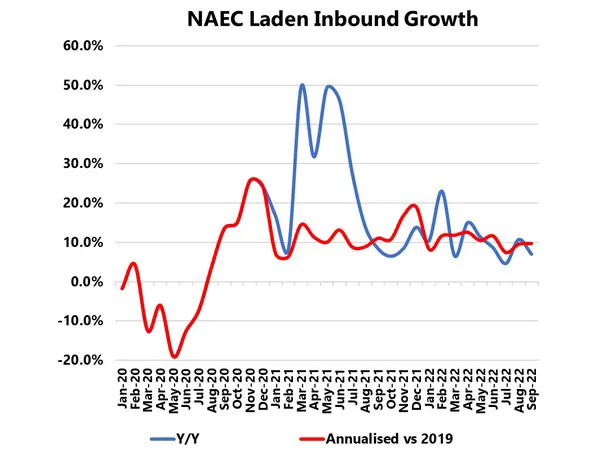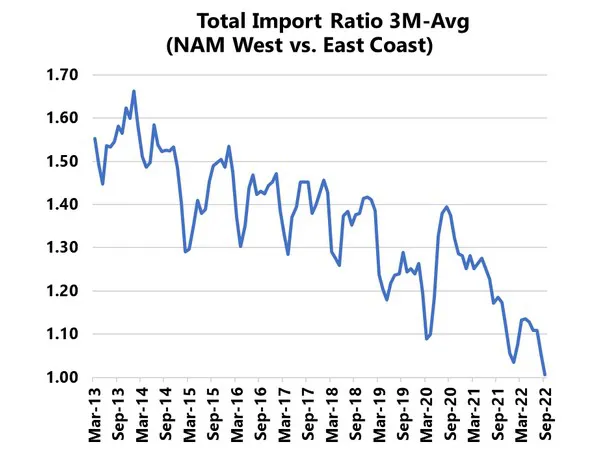While North America West Coast port volumes have started to contract sharply in 2022-Q3 (both Y/Y and on an annualized basis compared to 2019), the same is not the case for the North America East Coast ports.

As shown in the figure above, the Y/Y laden inbound growth in 2022-Q3 was between 4%-11%, and the annualised growth was between 7%-10%. Total handling volumes also exhibited a similar growth trend, albeit shifted slightly downwards. There is also an increase in the laden export volumes, growing Y/Y for four consecutive months in September, which shows that the carriers are starting to clear out laden export backlog a little more. That said, empty exports are still growing at a rate of 17%-20% Y/Y, when annualised against 2019.

There is also another key takeaway from our analysis, which is that there is a continuing volume shift from the West Coast to the East Coast ports, where handling volumes on either coast are closer to parity, whereas in the past decade, North America West Coast ports have handled considerably more volumes than the East Coast ports. This is shown in the bottom figure, where a figure greater than 1 means more volumes are handled in the West Coast ports, and vice versa.
For more information:
ia@sea-intelligence.com
am@sea‑intelligence.com
nhm@sea-intelligence.com
